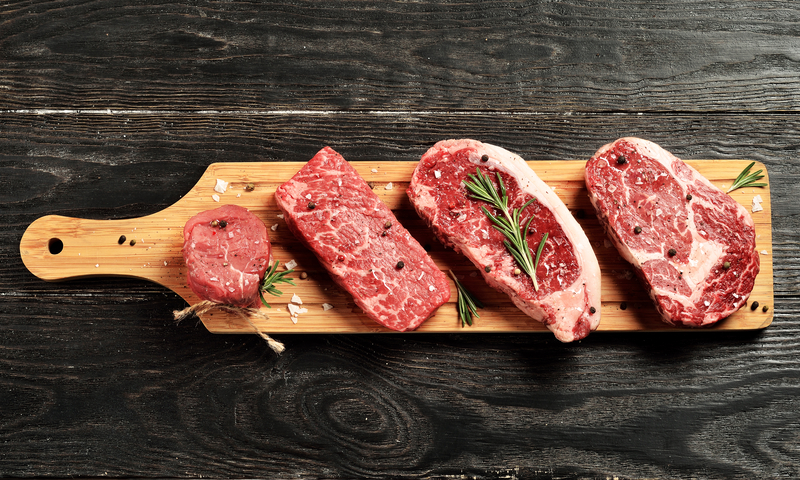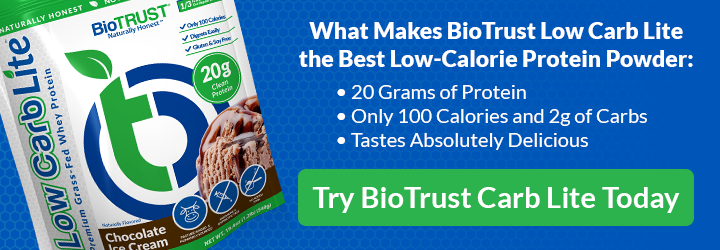Grass-Fed vs. Grain-Fed Beef: What’s the Difference?

In the beginning, most cows start their lives very similarly. They’re typically born in early spring and are nourished on milk from their mothers. They enjoy roaming free on pastures, grazing natural grasses and edible plants, just as their cattle ancestors did. They continue to live this way for between 4 to 9 blissful months (or until they reach around 650 to 750 pounds) before their environment can change drastically, depending on whether they are destined to become grass-fed vs. grain-fed beef.
Grass-Fed vs Grain-Fed Cows: The Basics
Grass-fed cows, on one hand, continue frolicking through the pasture, enjoying the sunshine on their backs (along with some potentially severe weather), and eating various grasses, herbs, flowers, clover, legumes, and other tasty forage. If they don’t have access to fresh forage (e.g., during the cold winter months), they may also be provided with a high-quality dried forage material. 1
On the other hand, life looks drastically different for conventionally-raised cows (i.e., grain-fed beef). Before they’re even a year old, these cows are moved off their natural pasture, often to overcrowded feedlots. Also known as “concentrated animal feeding operations” (CAFOs), these often provide confined stalls, limited space, and nothing that even closely resembles the green grass the young cows grew up on. This is the case for up to 80% of cattle in the United States. 1
Instead of eating grasses and other indigenous forage, the cows are fattened up with energy-rich grain feeds—typically made with genetically modified corn or soy—with perhaps some dried grass to supplement. Because of their diet, these cows typically grow faster and bigger to reach their target end weight much more quickly than pasture-raised cattle. 1
Of course, this is neither their natural diet nor habitat, so they can develop a list of health issues. This leads operators to preemptively provide antibiotics and growth hormones to help the cows continue to grow and stay “healthy” (i.e., disease-free). It is worth noting that, in 2017, the Food and Drug Administration passed the Veterinary Feed Directive (VFD), which says, “A VFD drug is intended for use in animal feeds, and such use of the VFD drug is permitted only under the professional supervision of a licensed veterinarian.” 2
This is how the cows live their last five or so months (until they hit around 1,200 pounds) before they’re harvested.
The process, environment, and care for the cows can differ dramatically as operational practices and country regulations can vary widely. Some grain-fed farms can be described as brutally terrible, while others can actually be pretty comfortable and nice. (In other words, we can’t just assume grain-fed equals awful, as many farmers really care for their animals and try to provide a comfortable, healthy environment for them, whether they’re grass- or grain-fed.)
Grass-Fed vs. Grain-Fed Beef: Nutrition
We’re all familiar with the saying, “You are what you eat.” Well, that’s just as true for cows as for humans. In other words, the food consumed by cows can significantly affect the nutritional profile of the food products (e.g., their beef) that comes from them. (And as it pertains to you, a more appropriate saying may be, “You are what you eat ate.”
For example, grass-fed beef is usually leaner than grain-fed beef. 3 That is, grass-fed beef is lower in both fat and calories. In addition, the composition of the fatty acids also differs:
- Grass-fed beef is lower in monounsaturated fat. 3
- While both types of beef provide similar amounts of omega-6 fats, grass-fed beef can be up to five times higher in omega-3 fatty acids. 4
- Grass-fed beef is also higher in cholesterol-neutral stearic acid and lower in cholesterol-elevating fats like myristic and palmitic than grain-fed beef. 5
- Another fat that’s higher in grass-fed beef (by about two times) is CLA, 5 which has several health benefits, including potentially helping humans lose bodyfat. 6
Because of the difference in nutrients, grass-fed beef tends to have a more complex and even “grassy” taste. You may also need to adjust how you prepare grass-fed beef, as it’s lower in fat. Finally, grass-fed beef may have a yellow-ish tinge due to its higher concentration of carotenoids, in particular, beta-carotene, which is a precursor to vitamin A, a critical fat-soluble vitamin that is important for normal vision, bone growth, reproduction, and normal, healthy cell metabolism.
There are also significant similarities between grass-fed vs. grain-fed beef. No matter where your beef comes from, it’s nutrient-dense. For example, all beef is an excellent source of protein, and it also contains high levels of vitamins B12, niacin, and B6. It also provides a healthy dose of iron, selenium, and zinc. Beef also provides two nutrients that are vital for muscle growth and brain health: creatine and carnosine.
Grass-fed beef does have a slight edge with these nutrients, but it may be overemphasized. Where grass-fed beef does have a more considerable advantage is with antioxidants like vitamins A and E 5,7 as well as carotenoids, glutathione, and superoxide dismutase (SOD). 8
Grass-Fed vs. Grain-Fed Beef: Environment
If you were to guess, you would probably think that cows living on pasture have a more peaceful, happier, healthier life (especially if you’ve ever driven by a stinky feedlot).
Interestingly, allowing cows to stay on their own pasture—combined with regular rotation off of that pasture—is also good for the pasture. Really! Cattle grazing increases the fertility of the soil and can lower carbon emissions—improving the environment. Plus, it’s more sustainable long-term for the animals, the grasses, the planet, and for humankind.
Raising cattle on the pasture also tends to be better for farmers and ranchers. This method is cheaper (than buying grains), provides more stable feed, decreases the need for veterinary attention, and makes life easier. It also saves the ranchers money, as less equipment and inputs are needed.
However, more land is required for the cattle to graze, and it can take longer for the cows to be ready for harvest (20 to 24 months vs. around 15 months). This is especially true for cattle subjected to more environmental threats (e.g., snow, wind, etc.) Ranchers are often able to charge a more premium price for the end product. However, they may also give up on quality grade premiums as most grass-fed beef doesn’t qualify for prime cuts. 1
It’s also worth noting that additional land is needed to grow feed (e.g., corn, soy) for conventionally-raised cows. When that is considered, land usage can equal out or can even be less for grass-fed vs. grain-fed beef. In addition, monoculture crops (like corn and soybeans) destroy topsoil and increase greenhouse gasses by much more than you may expect, while pastures can sequester greenhouse gasses.
Plus, because conventionally-raised cattle are confined in smaller spaces, there’s the problem of mounds of manure. The nitrogen, phosphorus, and potassium from this manure can contaminate the land and water surrounding the feedlot.
Finally, the profitability of grain-fed beef is often tied directly to the cost of grains, and the grain market can be very volatile. 1 So, grass-fed beef is clearly the winner when it comes to environmental considerations.
Grass-Fed vs. Grain-Fed Beef: It’s Complicated
No, we’re not referring to the relationship; rather, the term “grass-fed” isn’t always clearly defined. Some “grass-fed cows” don’t even have access to the great outdoors, so they aren’t pasture-raised. However, according to the USDA, to earn an official grass-fed label, the cows must be fed a 100% grass diet throughout their lives (other than milk before being weaned). 9 And farmers are required to sign legal documents to verify they are feeding only grass.
There is also a separate partial grass-fed claim allowed. For example, beef can be listed as 80% grass-fed on the label.
What about organic beef? Is that always grass-fed? No. In fact, up to two-thirds of organic beef produced in the United States is grain-fed. The criteria for organic beef are different from grass-fed. To be dubbed organic beef, the cows (from which the beef comes) must:
- Be raised under organic management from the last third of gestation (i.e., when the momma cow is pregnant) throughout the cow’s life
- Be raised on land that’s free from synthetic fertilizers, pesticides, or GMOs
- Be treated with no antibiotics or growth hormones (sick or treated animals are removed from the organic program)
- Be fed 100% organic feed
- Have at least 30% of their forage needs met through pastures during the growing season
- Have access to outdoor spaces year-round
- Be processed in certified organic facilities 1
Grass-Fed vs. Grain-Fed Beef: Final Considerations
Is grass-fed beef really worth the extra cost and possible inconvenience?
Ultimately, that comes down to personal choice and budget. While grass-fed beef does have a nutritional edge, all beef can be safe and highly nutritious. All beef is rich in protein, zinc, iron, and other nutrients.
That said, you will want to avoid overcooking any type of beef, as cooking it over high heat, or burning it on the grill, can lead to the formation of potentially harmful compounds like polycyclic aromatic hydrocarbons (PAHs) 10 and advanced glycation end products (AGES). 11 Overcooking meat also decreases the level of antioxidants and other nutrients.
Taste is also another consideration. Many people prefer the flavor and tenderness of a juicier, fattier steak, for example, as you’d get from grain-fed beef. Others like the complexity found in leaner grass-fed beef.
At the end of the day, what’s most important is to eat real food. Yes, grass-fed beef has the nutritional advantage. And grass-fed is also clearly better for the cows—and the environment.
That said, if you are unable to find it or if it’s difficult to afford (as grass-fed beef can be much more expensive), then conventionally-raised beef still provides loads of nutrition. So, the ultimate decision comes down to you and what you prefer.








